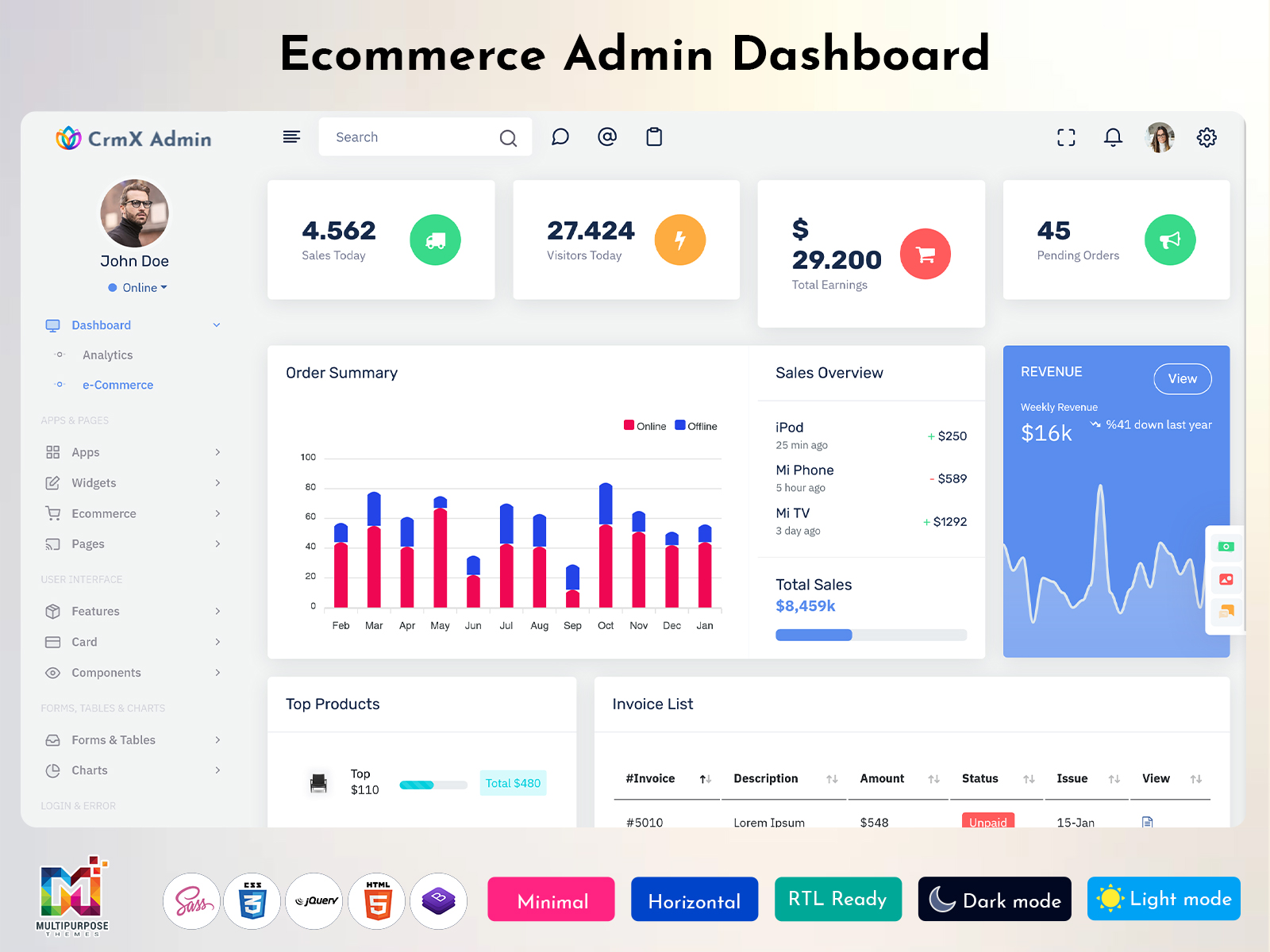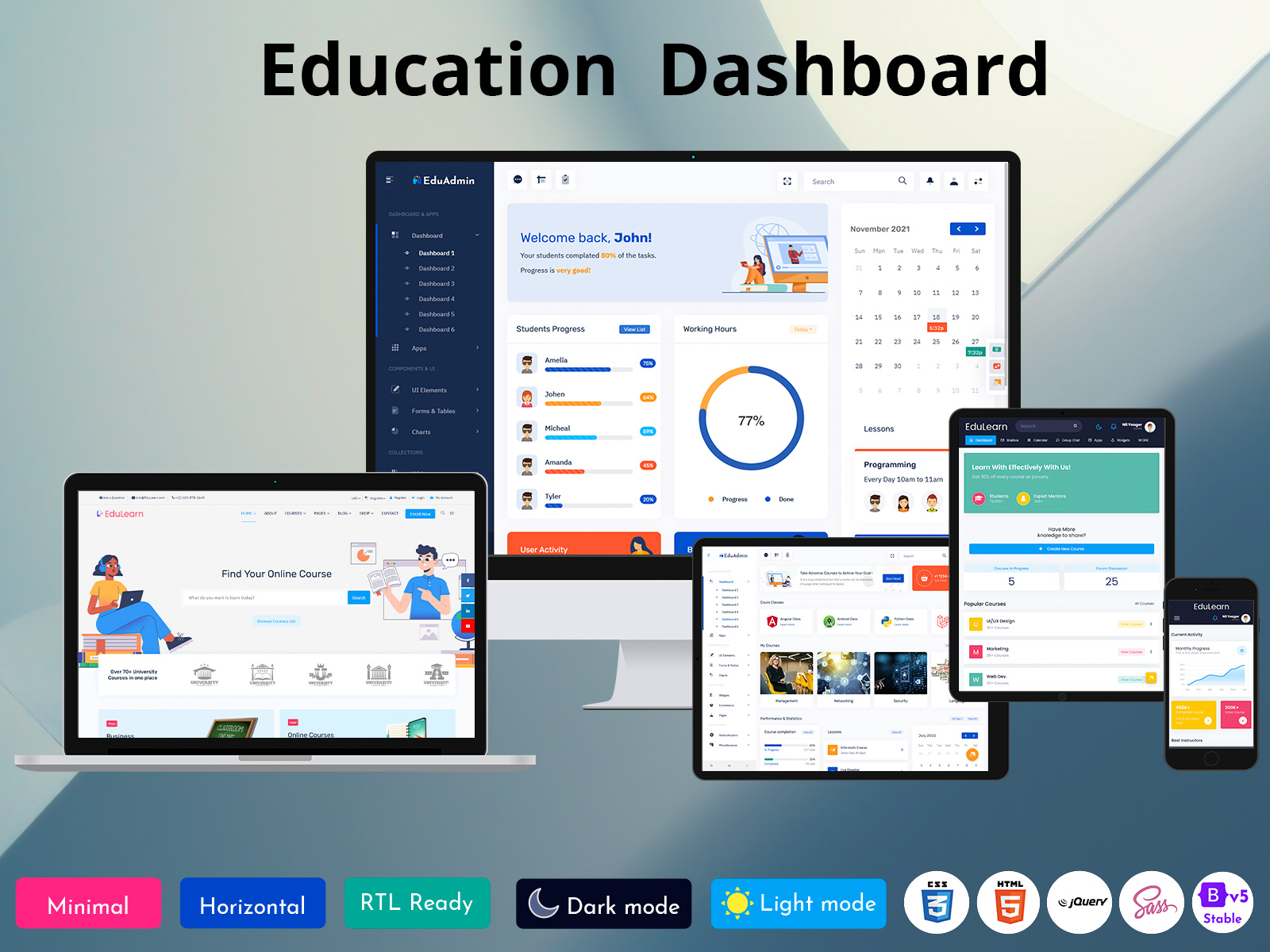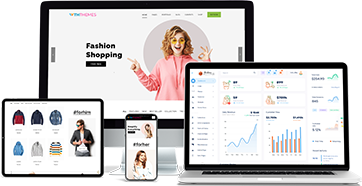Managing wedding events is a beautiful but complex responsibility. Every bride and groom dream of…

Admin Template: A Data-Driven Approach for D2C Brand Success
Reading Time: 6 minutes
Direct-to-Consumer (D2C) brands are reshaping the way products reach customers. With no middlemen, D2C brands manage everything from product design to marketing and distribution. This gives them immense control, but it also creates the challenge of managing data, customer insights, operations, and performance tracking seamlessly. That’s where a modern Admin Template steps in. For D2C brands, an Admin Template is not just a backend tool; it’s a strategic driver for business growth. By offering pre-built dashboards, intuitive interfaces, and scalable solutions, it simplifies operations and allows brands to focus more on customer experience.
This blog explores what D2C brands are, why an Admin Template matters, and how Dashboard Templates and Bootstrap 5 Admin Templates can help streamline processes for long-term success.
Explore E-Commerce Dashboards of Different Admins
Gilded Admin
BUY NOW DEMO
Tresto Admin
BUY NOW DEMO
BsinX Admin
BUY NOW DEMO
CRMi Admin
BUY NOW DEMO
Master Admin
BUY NOW DEMO
CrmX Admin
BUY NOW DEMO
What is a D2C (Direct-to-Consumer) Brand?
A D2C brand sells products directly to its customers without relying on retailers, wholesalers, or marketplaces. By owning the end-to-end customer journey, these brands enjoy:
– Direct customer relationships and feedback loops
– Greater control over pricing, branding, and customer experience
– The ability to innovate faster and launch personalized offerings
Famous examples include companies like Warby Parker, Dollar Shave Club, and Glossier, all of which built massive success by connecting directly with their audiences.
However, this direct approach demands real-time insights, streamlined management, and robust digital tools — which makes having a reliable Bootstrap Admin Template or Ecommerce Dashboard crucial.
Why Are Ecommerce Dashboards Important?
For D2C brands, ecommerce isn’t just about selling online — it’s about building a customer-centric ecosystem. With sales, customer behavior, supply chain, and marketing data flowing in every second, an Ecommerce Dashboard plays a vital role in organizing and presenting this information effectively.
Here’s why Ecommerce Dashboards are crucial:
1. Centralized Data – Instead of juggling multiple reports, ecommerce dashboards collect everything — sales, orders, inventory, and customer data — into one interface.
2. Real-Time Visibility – A Bootstrap 5 Dashboard Template helps D2C brands monitor performance metrics in real-time, enabling quick responses to sudden changes like demand spikes or supply chain issues.
3. Better Customer Understanding – Dashboards showcase customer demographics, buying patterns, and loyalty metrics, helping brands personalize their approach.
4. Optimized Business Decisions – By analyzing KPIs on a Dashboard Template, brands can refine pricing, marketing strategies, and product offerings.
5. Growth Tracking – An Ecommerce Dashboard allows continuous monitoring of revenue, repeat orders, and market expansion performance.
In short, Ecommerce Dashboards aren’t just reporting tools — they’re strategic engines that power growth.
Ecommerce Dashboard Features
An efficient Bootstrap Admin Template designed for ecommerce brands comes with a set of features that simplify everyday management. Let’s explore key ones:
1. Sales & Revenue Overview
Displays total sales, profit margins, and growth trends over time. This helps D2C brands track performance goals and quickly identify areas needing improvement.
2. Customer Analytics
An Ecommerce Dashboard highlights customer acquisition cost (CAC), retention rate, and repeat purchases. These insights are crucial for building loyalty programs and improving user confidence.
3. Order & Shopping Cart Tracking
A Bootstrap 5 Admin Template often comes with cart monitoring features. It helps identify abandoned carts, checkout completion rates, and fulfillment times.
4. Marketing Campaign Performance
Track impressions, click-through rates, conversions, and campaign ROI. A Dashboard Template gives clear visibility into which marketing efforts are working best.
5. Inventory & Supply Chain Management
Prevents stockouts or overstocking by offering real-time data on available products, demand forecasting, and supplier stats.
6. Team & Agent Stats
A strong Bootstrap Admin Template allows managers to measure sales team efficiency, customer support response times, and agent productivity.
7. Device & Session Tracking
D2C brands thrive on knowing how customers shop. Dashboards show data by device (mobile, desktop, tablet), giving insights into UX optimization.
Together, these features ensure that an Ecommerce Dashboard isn’t just visual — it’s actionable.
Key Takeaways
– D2C brands rely on data-driven decisions. An Admin Template provides the foundation to analyze performance and scale faster.
– Ecommerce Dashboards centralize insights. From sales to customer engagement, they make performance tracking seamless.
– Customization and flexibility matter. A Bootstrap 5 Dashboard Template or Bootstrap Admin HTML allows businesses to tailor dashboards to their unique needs.
– Power BI and Bootstrap solutions complement each other. Integrating an Ecommerce Dashboard with analytics tools like Power BI offers deeper visibility for long-term success.
– Investing in the right Dashboard Template is strategic. It doesn’t just save development time; it directly impacts efficiency, growth, and customer satisfaction.
Why Admin Template is Important for D2C Brand Success
For D2C businesses, data flows in from multiple touchpoints: websites, mobile apps, customer support, logistics, social media, and marketing campaigns. Managing this data effectively requires more than spreadsheets — it needs a Dashboard Template designed to centralize, analyze, and visualize insights.
Here’s why an Admin Template is a game-changer for D2C brands:
1. Unified Data Management – Track sales, revenue, inventory, and customer behavior in one place with a Bootstrap Admin Template.
2. Real-Time Performance Tracking – Dashboards provide live metrics for sales growth, orders, and customer engagement.
3. Scalability – As the brand grows, a Bootstrap 5 Admin Template can handle larger volumes of data and integrate with new tools.
4. Better Decision-Making – With visual analytics in an html template dashboard, teams can make faster, data-driven decisions.
Benefits of Admin Template for D2C Brand Success
Let’s break down the key advantages of integrating an Admin Template for D2C operations:
1. Data Visualization Made Simple
With a Dashboard Template, brands can convert complex datasets into easy-to-understand graphs, KPIs, and progress trackers. This makes it easier for managers to evaluate campaign performance, revenue growth, and customer behavior trends.
2. Operational Efficiency
A Bootstrap 5 Dashboard Template eliminates the need to build dashboards from scratch. It comes pre-designed, mobile-friendly, and customizable, reducing development time and costs significantly.
3. Scalable & Flexible Design
D2C brands evolve quickly, adding new product lines and markets. A Bootstrap Admin HTML template offers flexibility to adjust dashboards, add widgets, and scale seamlessly as needs expand.
4. Ecommerce-Centric Features
An Ecommerce Dashboard is particularly helpful for D2C companies. It provides specialized features like shopping cart tracking, order management, sales overviews, and customer engagement stats.
5. Consistency in Branding
Using a Bootstrap Admin Template ensures consistency in design across different modules, making the platform professional, reliable, and user-friendly for internal teams.
How Admin Template Helps D2C Brands
When implemented effectively, an Admin Template can transform how D2C brands operate. Here’s how:
1. Sales & Order Tracking
With an html template dashboard, brands can monitor real-time order volumes, revenue trends, and customer preferences, enabling quick adjustments in marketing or pricing.
2. Customer Insights
A Bootstrap 5 Admin Template helps consolidate customer demographics, purchase history, and feedback to design personalized campaigns.
3. Inventory & Supply Chain Management
Through a Bootstrap Admin Template, brands can track stock levels, identify supply chain delays, and optimize logistics, ensuring smooth order fulfillment.
4. Marketing Campaign Analysis
D2C brands spend heavily on social and digital marketing. A Dashboard Template helps measure campaign impressions, conversions, and ROI effectively.
5. Financial & Revenue Monitoring
With pre-built Ecommerce Dashboard widgets, brands can easily evaluate revenue growth, profit margins, and operational costs in a structured format.
Key Components of a D2C Dashboard Template
To understand the potential, let’s look at examples of what D2C brands can include in their Bootstrap 5 Dashboard Template:
– Profit & Orders Overview – Track total sales, order values, and customer acquisition cost.
– User Confidence & Progress – Analyze repeat customers, loyalty programs, and engagement metrics.
– Team & Agent Stats – Monitor sales team performance and agent interactions.
– Revenue Overview – Compare growth across different campaigns and time periods.
– Country Overview – Understand geographical sales distribution and potential new markets.
– Shopping Cart & Sales Stats – Track abandoned carts, checkout completions, and revenue spikes.
Such features make an Admin Template not just a backend panel but a strategic asset for growing D2C enterprises.
FAQs
Q1: Why should a D2C brand use an Admin Template instead of building one from scratch?
An Admin Template saves time, ensures responsive design, and includes pre-built dashboards that simplify reporting and management — all critical for fast-scaling D2C brands.
Q2: Is a Bootstrap 5 Admin Template suitable for ecommerce operations?
Yes. A Bootstrap 5 Admin Template or Ecommerce Dashboard is specifically designed with features like shopping cart analytics, order management, and sales reporting for D2C brands.
Q3: How does a Dashboard Template help in decision-making?
A Dashboard Template offers real-time insights into revenue, customer behavior, and campaign performance, enabling brands to make data-driven business decisions quickly.
Q4: Can I customize an Admin Template for my unique D2C business model?
Absolutely. Whether using a Bootstrap Admin HTML or Bootstrap Admin Template, they are fully customizable to reflect your brand’s KPIs and workflows.
Q5: Are these templates compatible with Power BI or other analytics tools?
Most html template dashboards and Bootstrap 5 Dashboard Templates are built for flexibility, meaning they can integrate with Power BI, Google Analytics, and other third-party tools for deeper reporting.
Conclusion
In the fast-paced world of D2C commerce, success is about efficiency, insights, and customer experience. A modern Admin Template or Dashboard Template provides D2C brands with the tools they need to scale, monitor growth, and improve decision-making.
From Bootstrap 5 Admin Templates to Ecommerce Dashboards, these ready-to-use solutions enable brands to focus on innovation and customer relationships rather than technical challenges.
For D2C brands aiming to succeed in today’s competitive landscape, adopting a data-driven Admin Template isn’t just a convenience — it’s a necessity.
 skip to Main Content
skip to Main Content




This Post Has 0 Comments